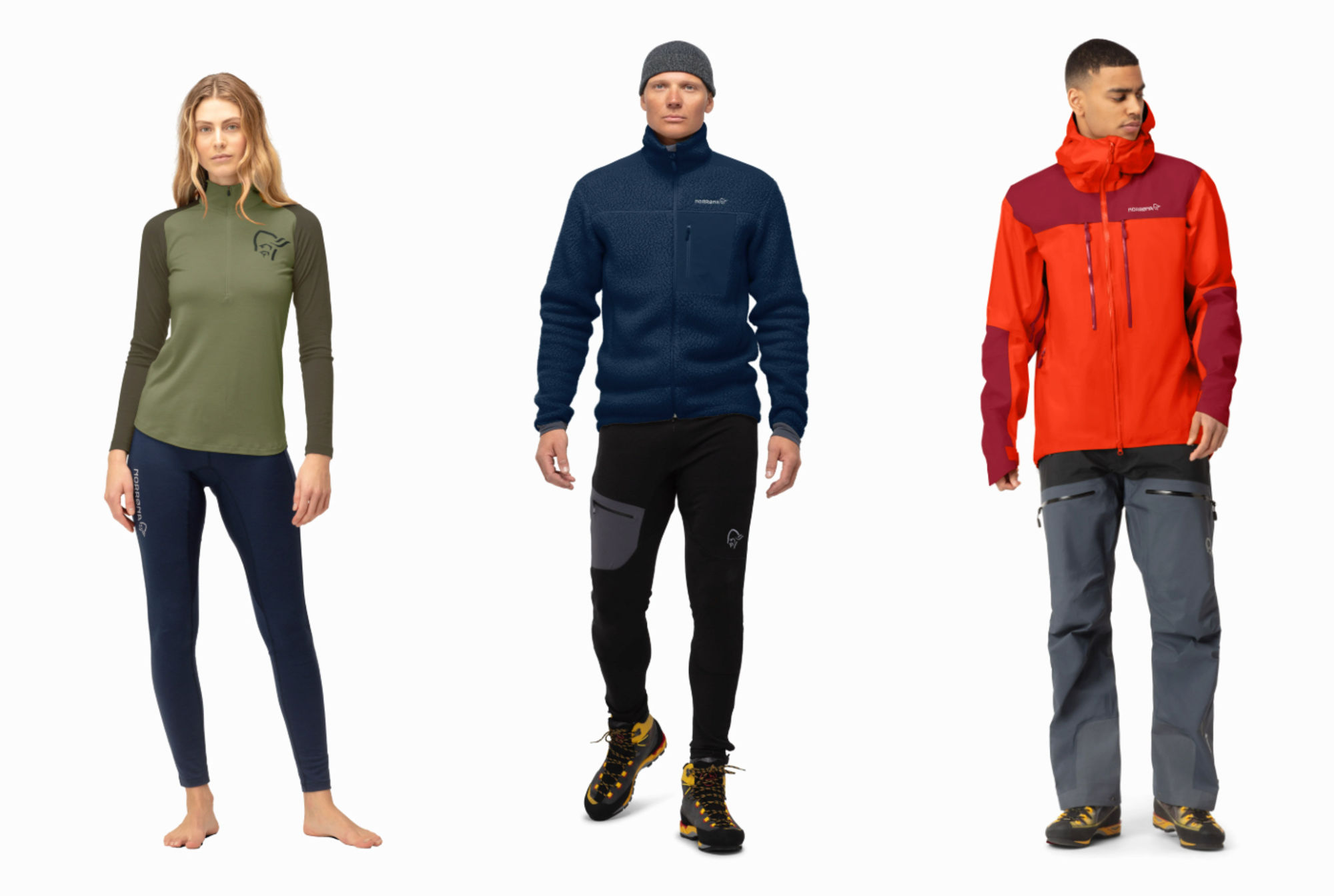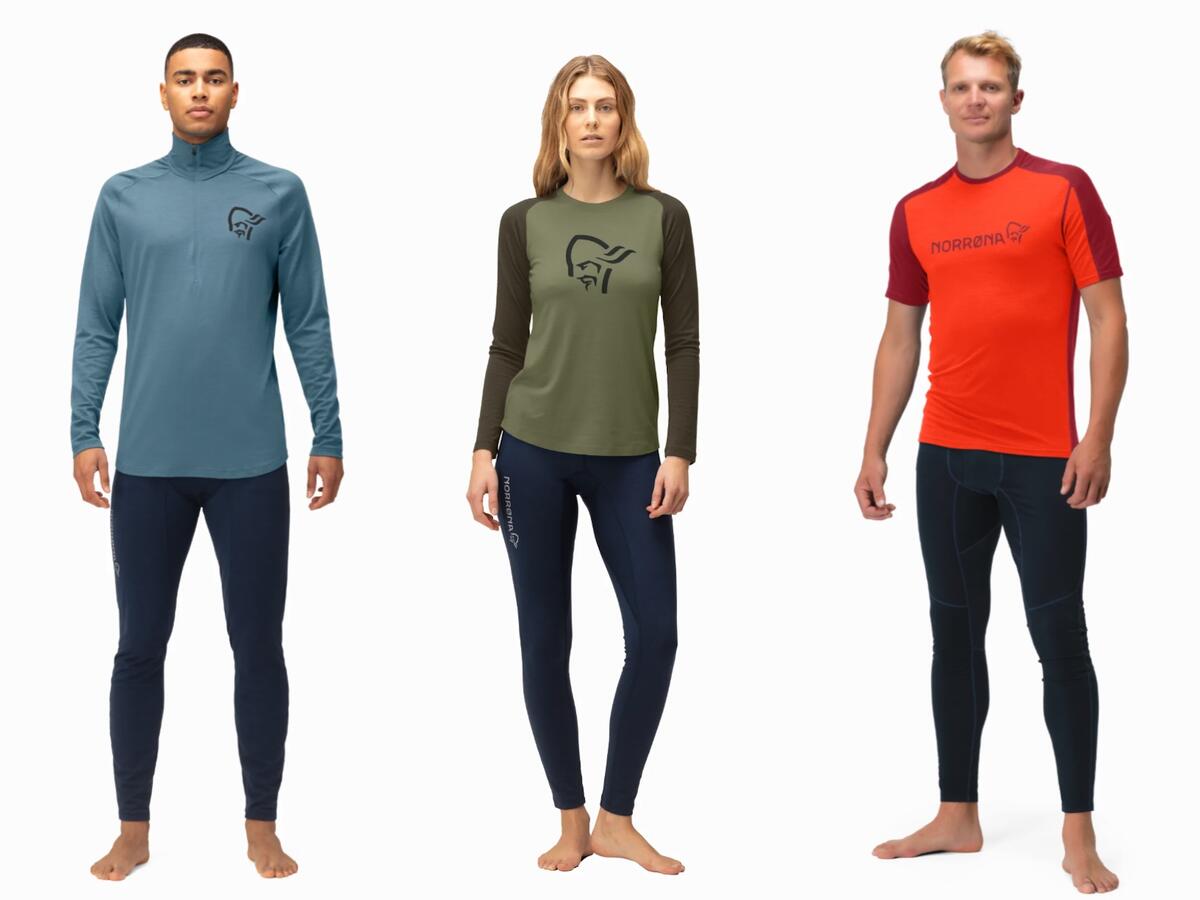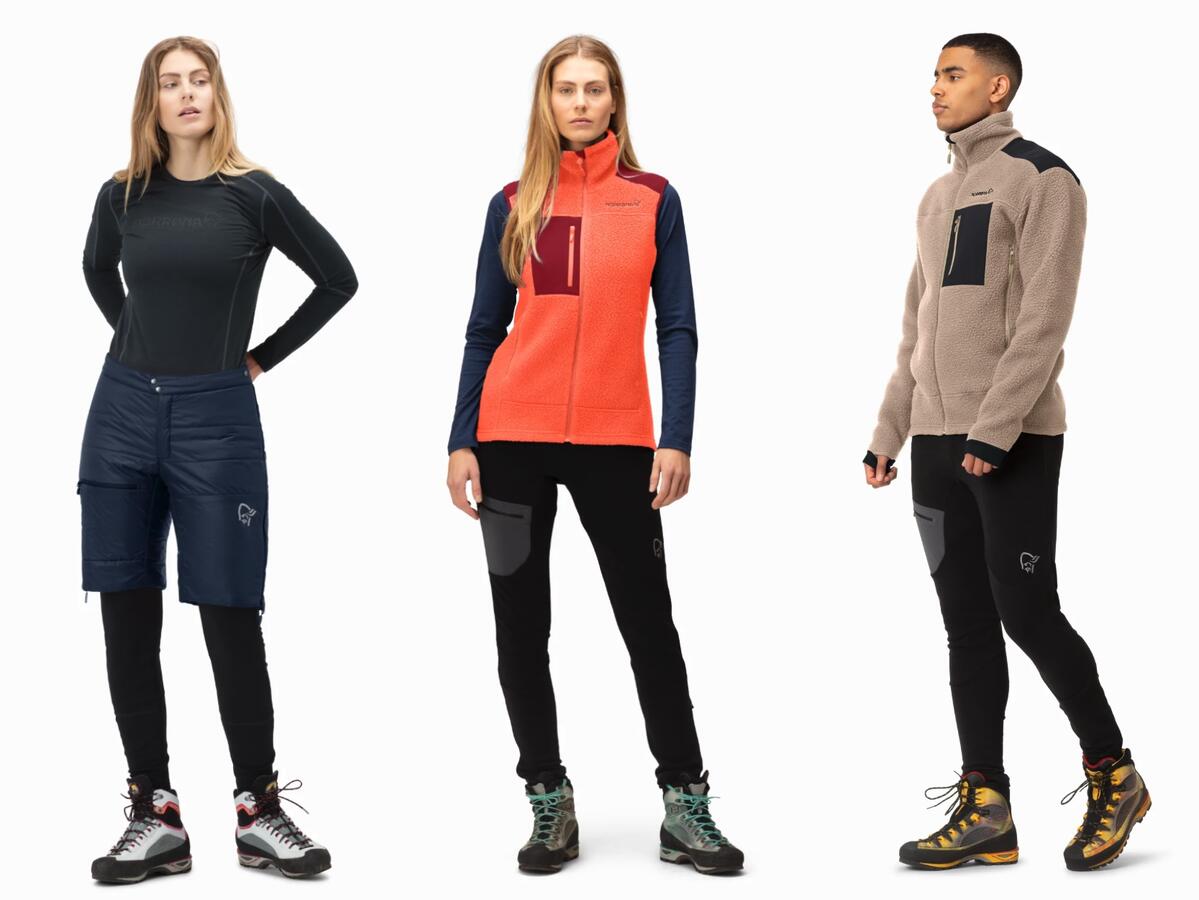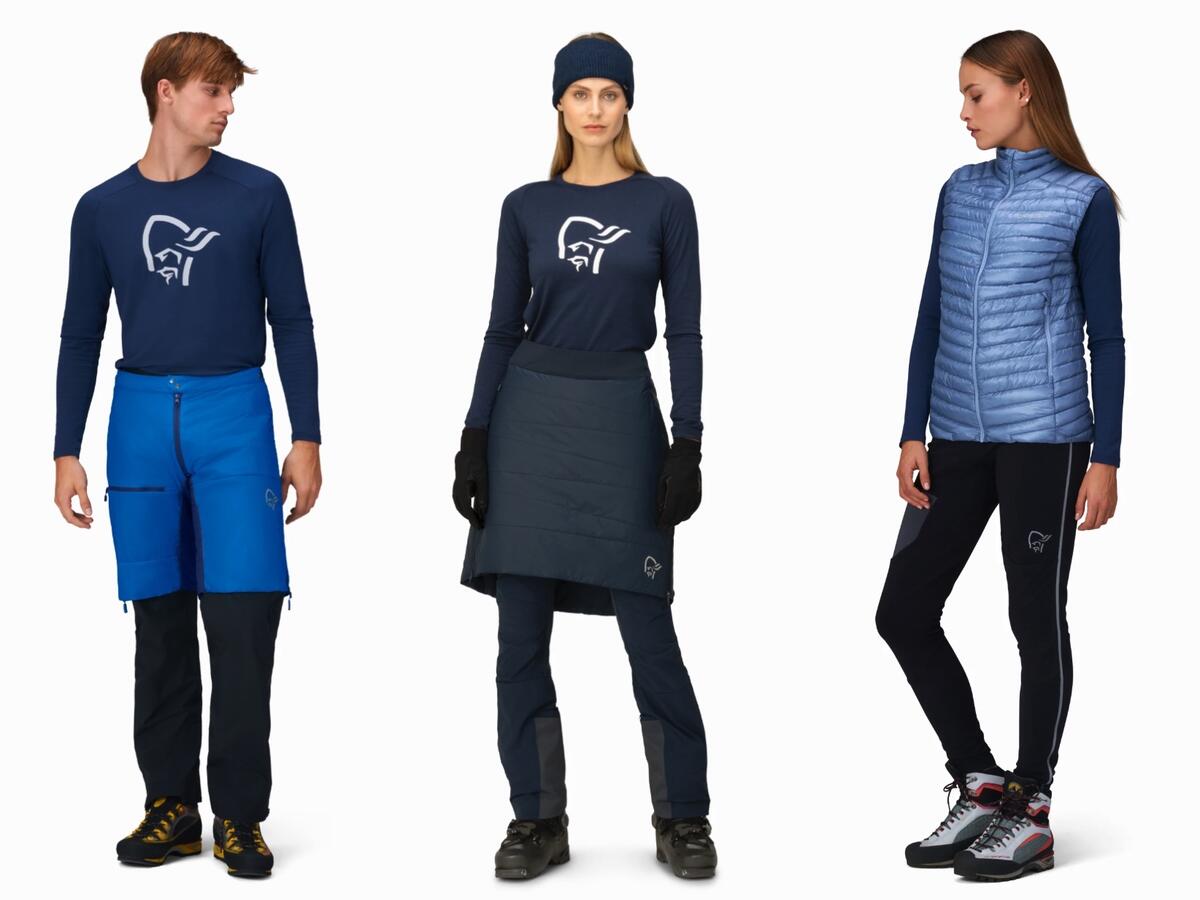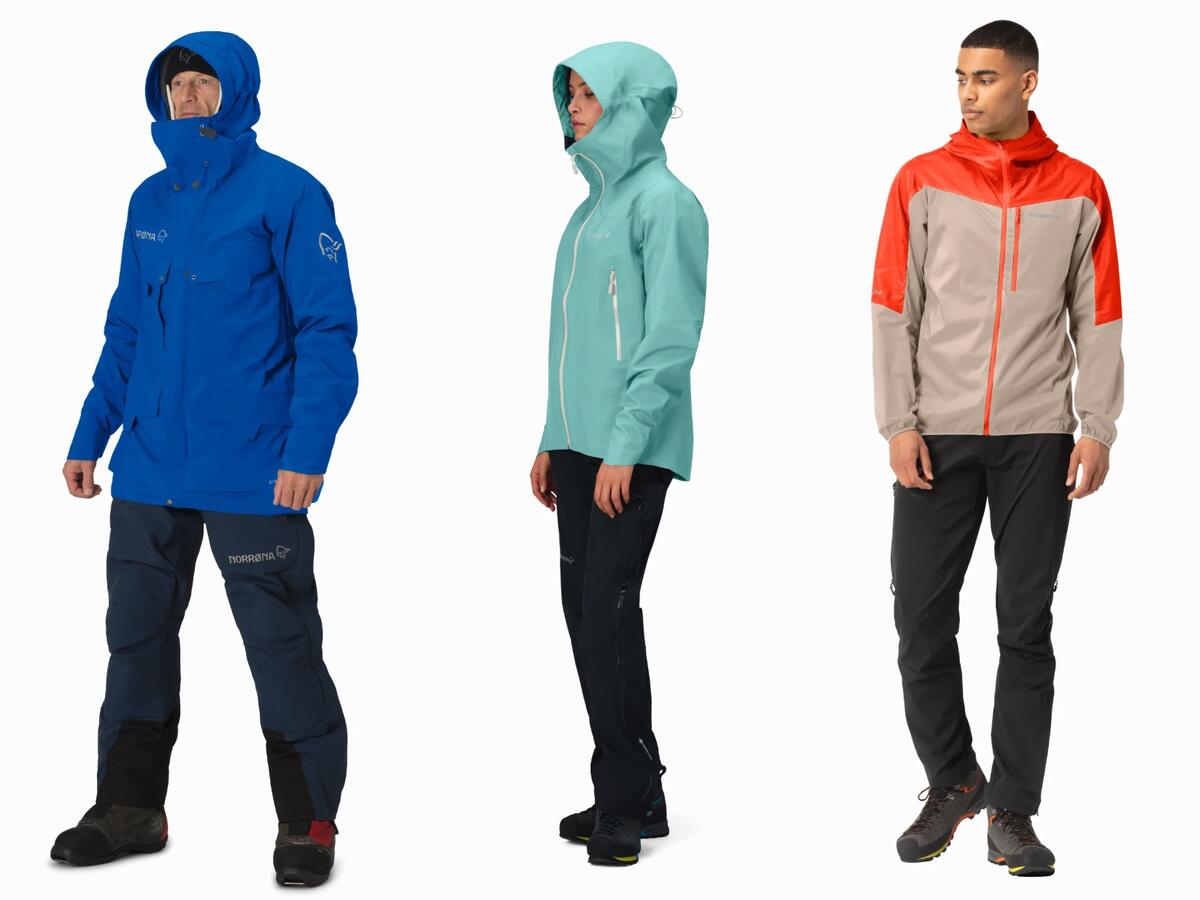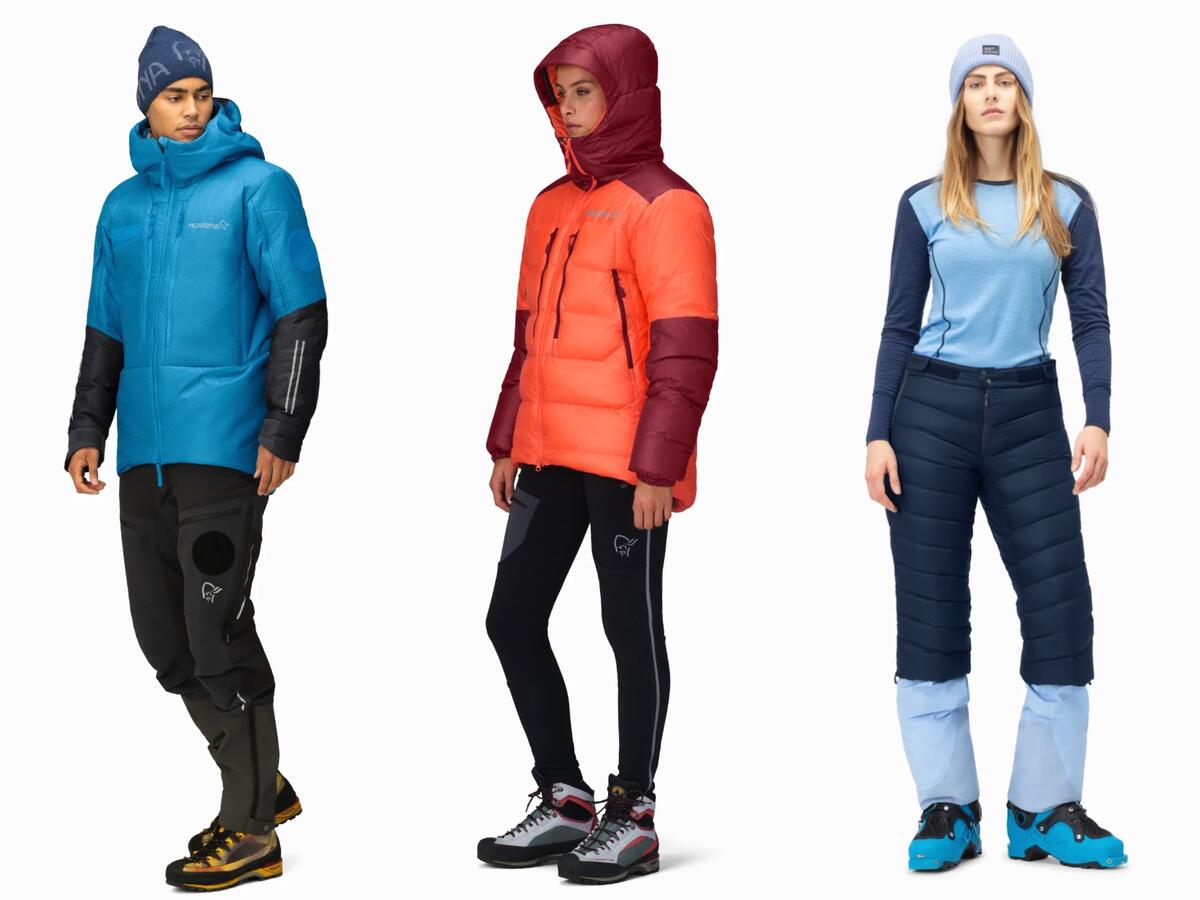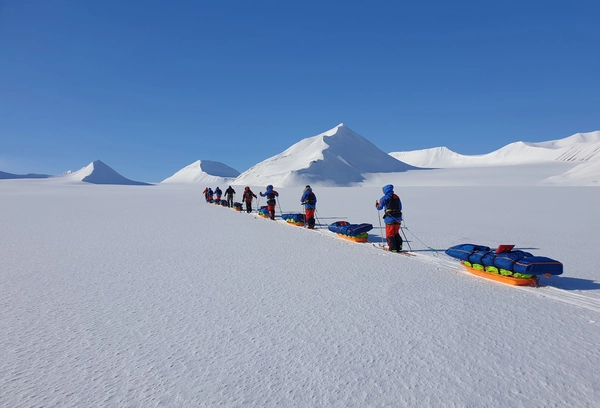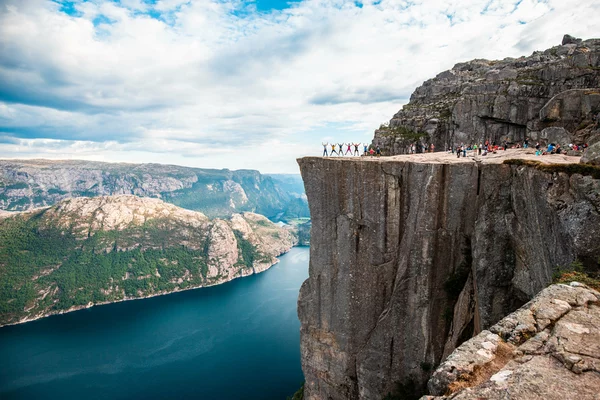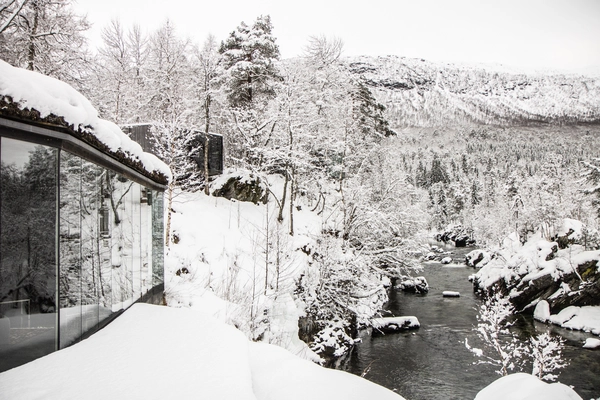Staying comfortable on any adventure comes down to smart layering. The right combination of moisture-wicking, insulating, and weather-protective layers keeps you dry, warm, and prepared for whatever comes your way. With multiple layers, you can easily adjust to changing conditions. In this guide, we’ll show you how to layer effectively for your adventure.
If you've already booked a trip with us – or are considering it – it's a good idea to check the packing list at the bottom of the trip page on our website. We’ve listed both required and recommended items. The required ones are chosen for comfort and safety. Recommended items can be adjusted to your needs. Still, it’s not always easy to understand exactly what’s needed. Why do we list a light rain jacket for some trips and a shell jacket for others? How thick is a thick down jacket? How thin is thin? This article will help you understand what kind of gear is expected.
Base layer: Wicks moisture away from the skin to keep you dry
A good base layer keeps sweat off your skin, helping you stay dry and warm. Wool, for example Norrøna pureUll products, is a top choice - it insulates even when damp, breathes well, and resists odor. Synthetic fabrics like polyester and polypropylene dry quickly and wick moisture effectively but can trap odors. In addition, some brands make a mix, such as Norrøna falketind equaliserUll and femund equaliser merino, to combine the best properties of both synthetic materials and wool. Avoid cotton, as it holds moisture and cools you down.
But fabric isn't the only factor - design matters too. The key is an open-weave fabric, which enhances breathability while also trapping warm air for insulation. As an example, mesh or netting base layers create air pockets that improve insulation while allowing excess heat and moisture to escape, making them a great choice when you're active and need both warmth and breathability. For optimal performance, a snug fit that keeps the fabric in direct contact with your skin is important. Thicker base layers provide more warmth, while thinner ones can offer better breathability. The key is finding the right balance for your activity and conditions.
Wool is great for cold climates, but synthetics can also be a solid choice, especially materials with mesh designs. On our tours, you can use both synthetic and wool long underwear, even for cold winter adventures. If you choose synthetics in winter, make sure it's designed for the cold. For underwear, we recommend wool for both men and women.
How many sets of base layers you need depends on the type of trip and the temperature/climate. On multi-day trips, such as skiing adventures, it’s essential to bring at least two sets to ensure you always have a dry one in case you get wet.
Mid layer: Provides insulation
Like the base layer, the mid layer also relies on an open-weave fabric for optimal performance. A finer weave traps less air, reducing insulation—even in a thick garment.
Additionally, different materials have distinct characteristics. Down offers the best insulating properties with the highest heat-to-weight ratio and is highly packable. However, down must be covered by a shell, as it is not a solid material, and this also provides wind protection. However, down does not insulate when wet. Synthetics can be divided into two groups: fleece and down "imitations" like Primaloft, which, like down, require a shell. Both insulate better than down when wet, but they don’t pack as small. Wool provides good insulation in general, and the best insulation when wet. It is also naturally resistant to odor-causing bacteria, making it a great choice for long trips or multi-day wear. However, wool is the least packable and tends to be heavier than both down and synthetic options.
Mid layers can range from fleece and wool tops of varying thickness to thin or medium down and synthetic jackets or vests, such as Norrøna's trollveggen down800 super light collection. Fleece and wool breathe well and insulate even when wet, making them ideal for medium to high activity levels, such as hiking or skiing. The colder it is, the thicker the layer—or you can combine two. The temperature and your activity level determine the best choice. Wool and fleece are also great for damp conditions, such as when temperatures hover around 0°C with rain. Wear them over your base layer, ensuring a close but comfortable fit.
Down and synthetic jackets are ideal for cold weather. They can be worn directly over the base layer - best suited for low-activity levels, as they typically breathe less than wool or fleece sweaters due to their outer material - but are more commonly used as a second mid-layer in colder conditions, especially for low to medium activity. However, they can also be suitable for more high-intensity activities in extreme cold. Synthetic insulation is the better option if you tend to sweat a lot or face damp or wet conditions, while down is best suited for cold, dry conditions.
There are also various options for mid-layer bottoms. Some simply wear a second pair of long johns—for example, layering a mesh base layer under a regular wool long john can be a great choice for cold days on skiing adventures. Other options include fleece tights or insulated 3/4-length pants, skirts or shorts for men & women.
Many of these bottoms can be worn either under or over the outer layer (shell). Insulated bottoms are especially popular among many women, as this area is more prone to getting cold due to physiological factors.
Outer layer: Protects against wind, rain, cold and snow
The outer layer is your shield against the elements. Depending on the conditions, outer layers can vary in protection, breathability, and insulation. In general, it's recommended to choose a size that isn’t too tight, so you can comfortably wear base and mid-layers underneath and move freely.
Wind garments. Lightweight, breathable layers that block wind, but may not be fully waterproof. Ideal for most activities in dry but windy conditions. Should be used in addition to waterproof layers, not as a replacement.
Rain jackets and pants. Wind and waterproof, Gore-Tex or similar, medium/lightweight, with no insulation. Suitable for temperatures above 0°C (32°F), on trips that don’t require heavy-duty garments. These jackets/pants are often less breathable, so look for options with ventilation (e.g., pit zips) to improve moisture management. A hood is preferred. Typically used in summer, in lower-elevation mountains or areas with less harsh weather. Well suited for many shorter or less demanding hikes in Norway, including both forested areas and mountain trails, such as our Best of Lofoten tour.
Shell jacket and pants. Wind and waterproof, Gore-Tex or similar, with no insulation, heavy duty. Suitable for year-round temperatures and climate conditions. Used for activities such as skiing (alpine, touring, expeditions), high-altitude trips, mountaineering. Also often suitable for regular hiking in the mountains - espesically where the environment is harsh, such as in the Norwegian mountains. A hood on the jacket is mandatory. For activities that require wearing a helmet, make sure you choose a jacket that has a helmet compatible hood. These are often less breathable, so look for options with ventilation (e.g., pit zips) for better moisture management. It is preferred that these jackets sit over the hips, and big enough to be able to have base- and mid-layer underneath.
Insulating tops and bottoms. Designed purely for warmth and are primarily used on top of everything else. These include thick down or synthetic jackets and pants, for example Norrøna's trollveggen down800 Hood. Medium thikness can be lyngen down850 and trollveggen thermo100 rescue.
